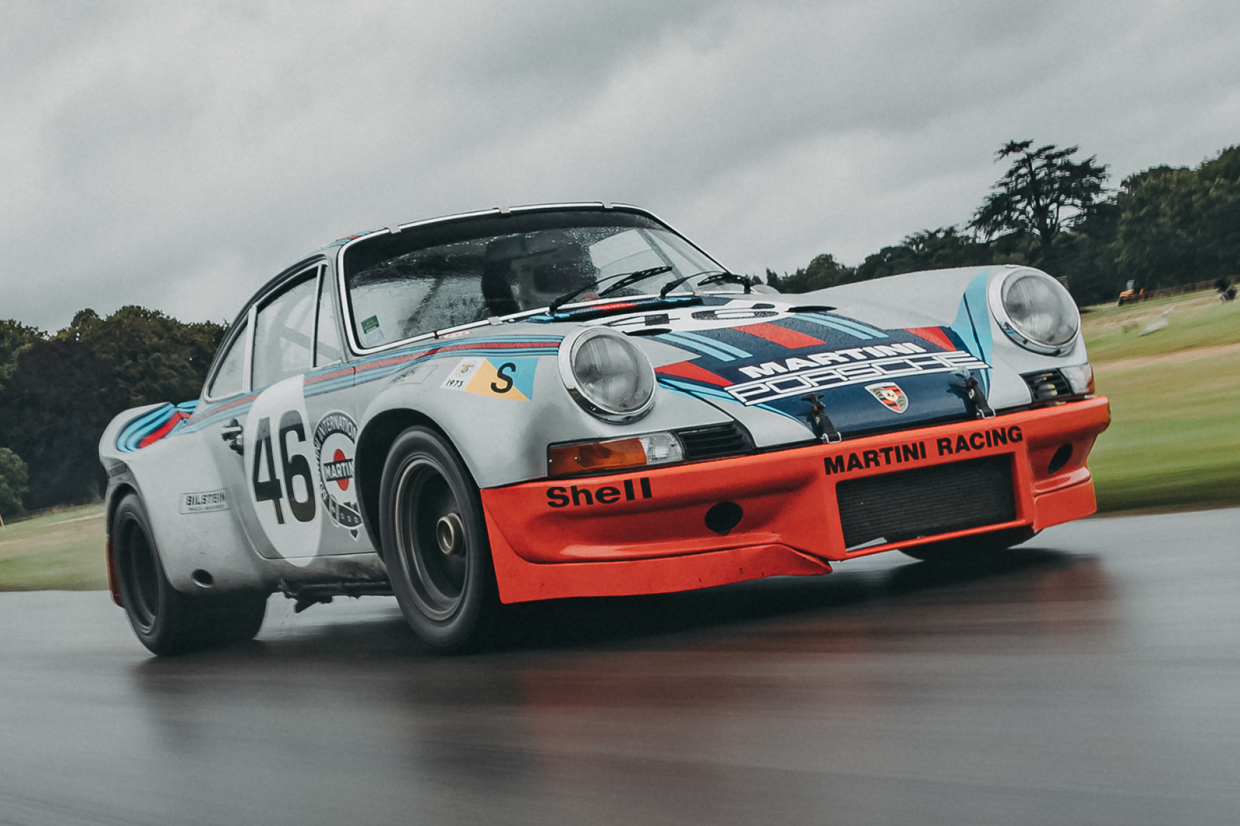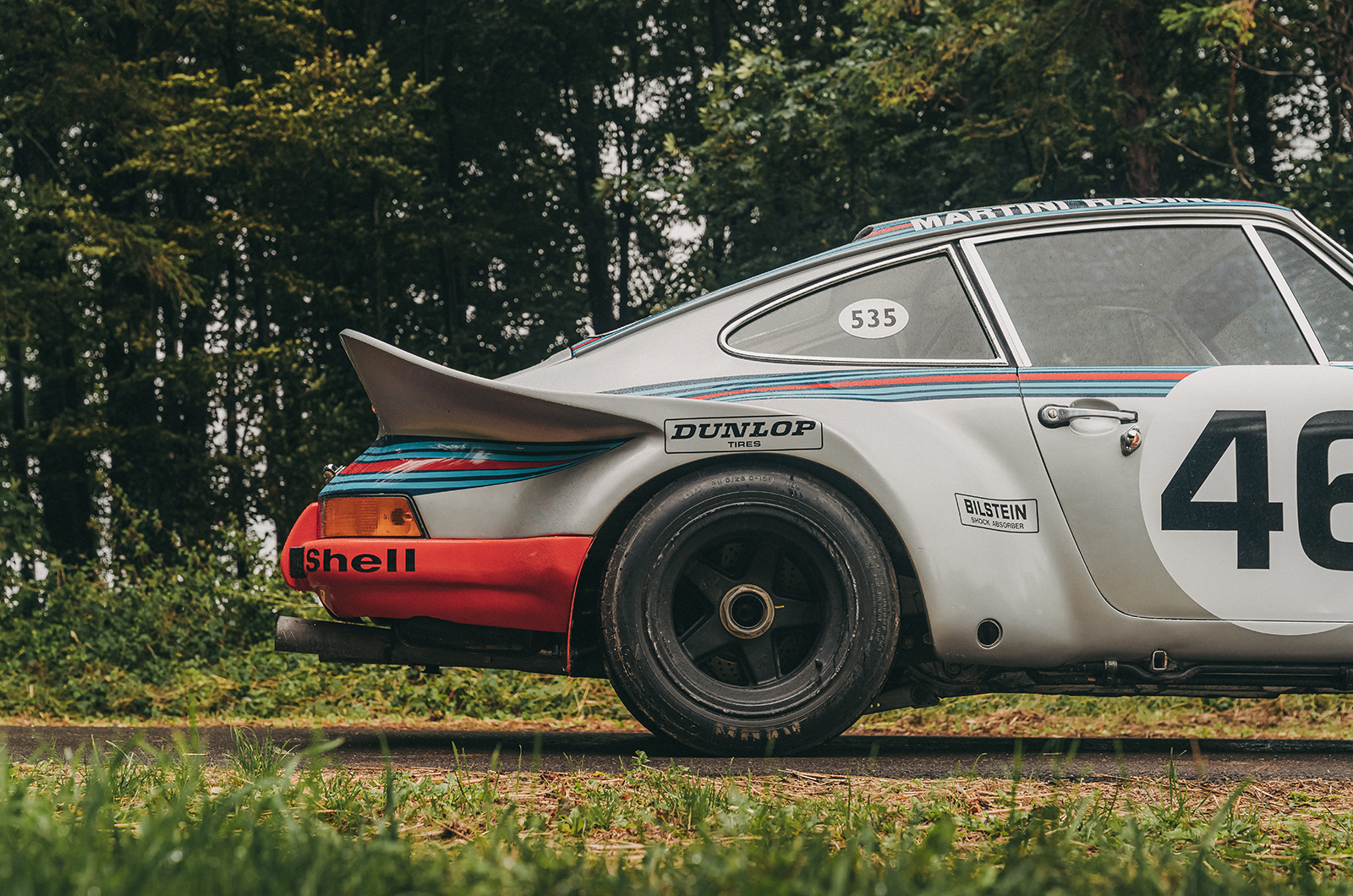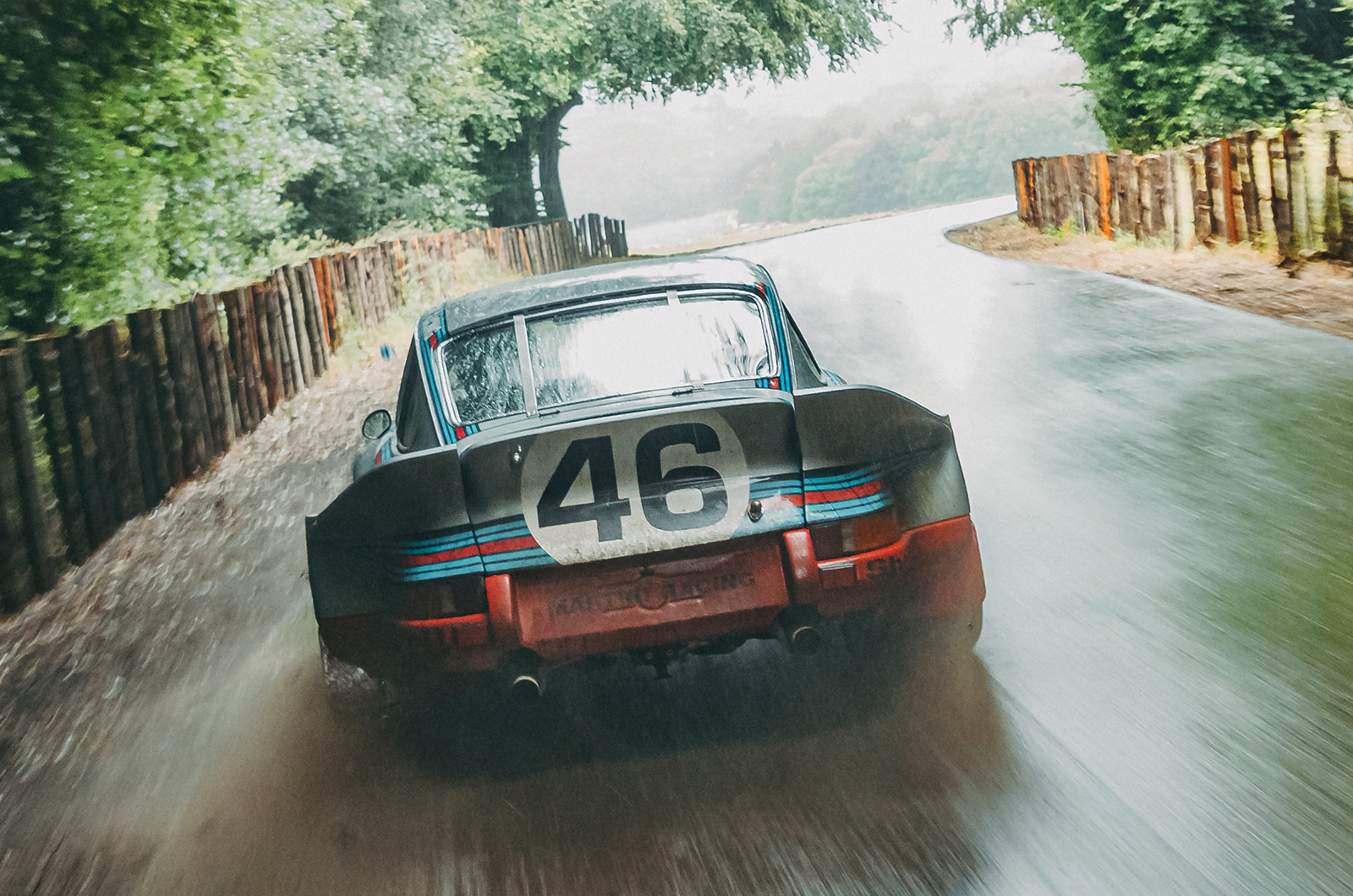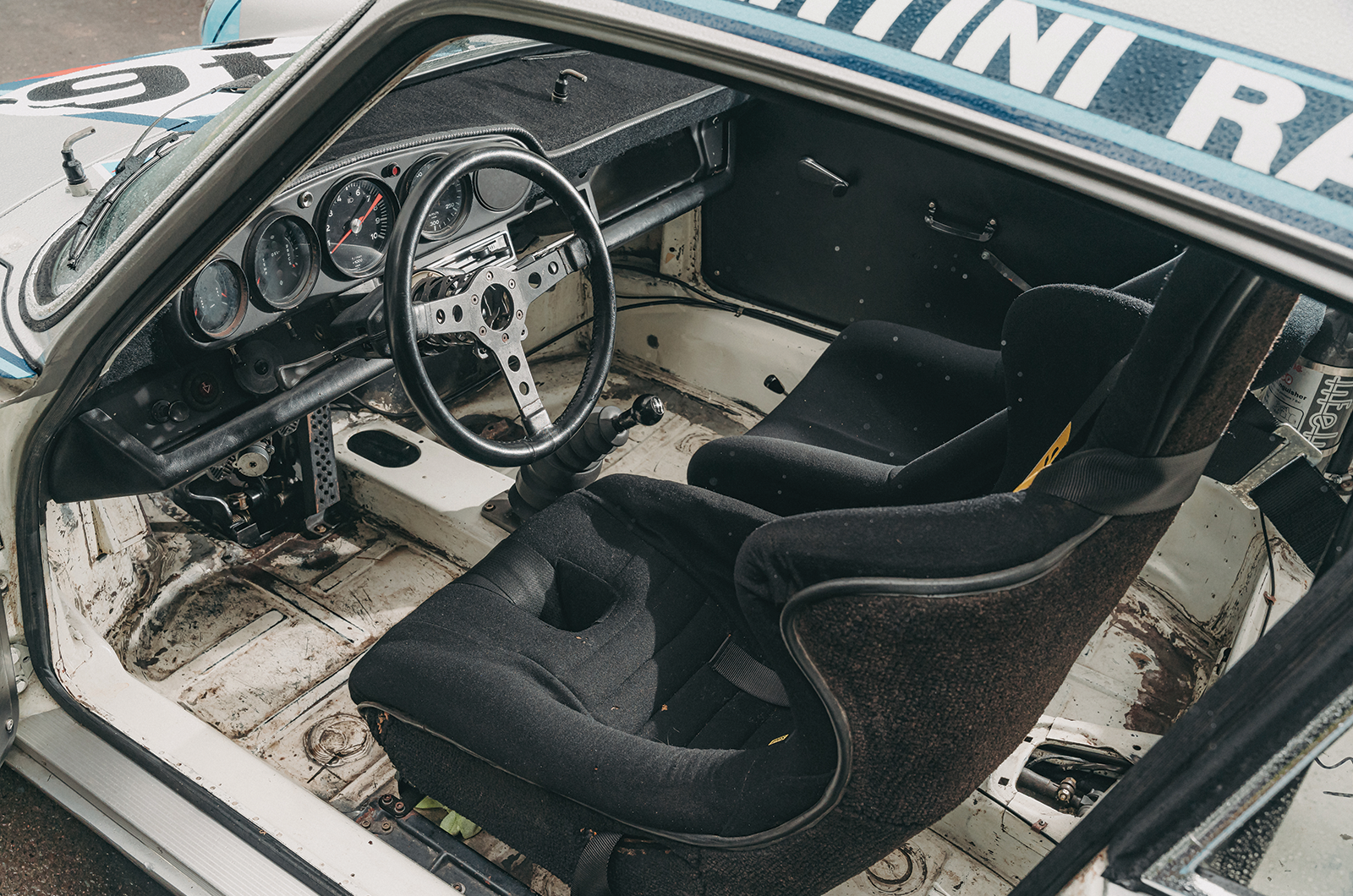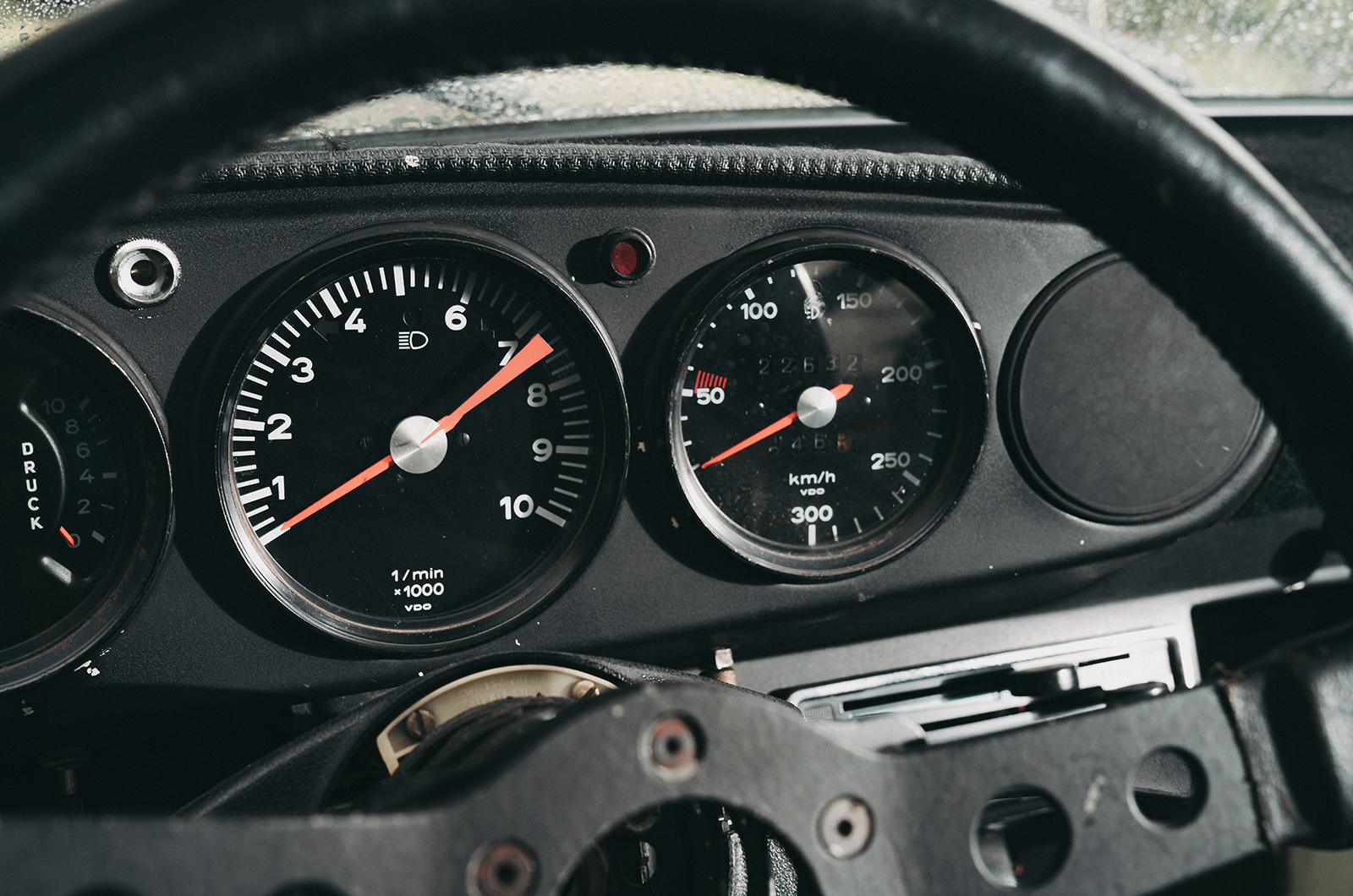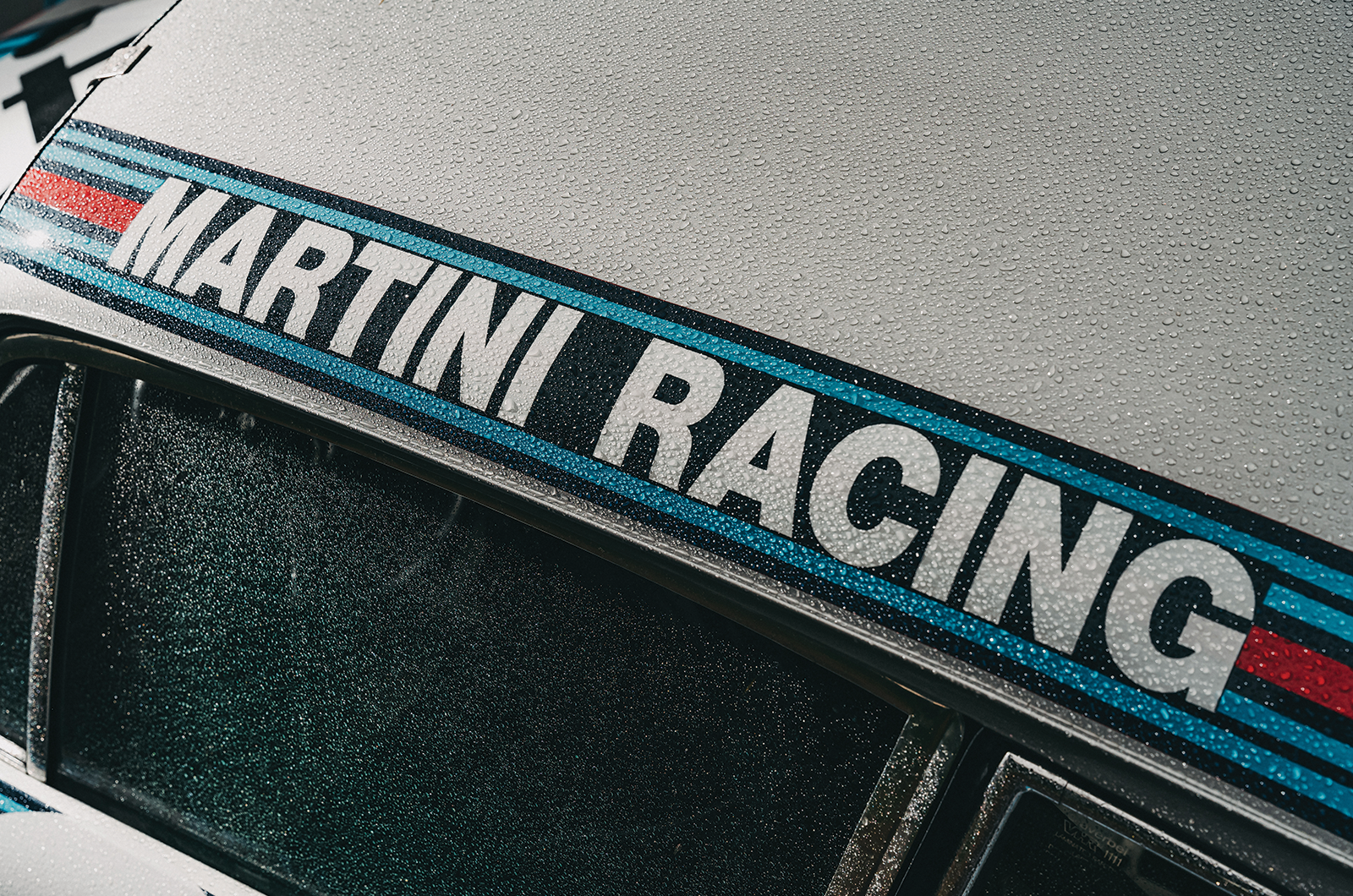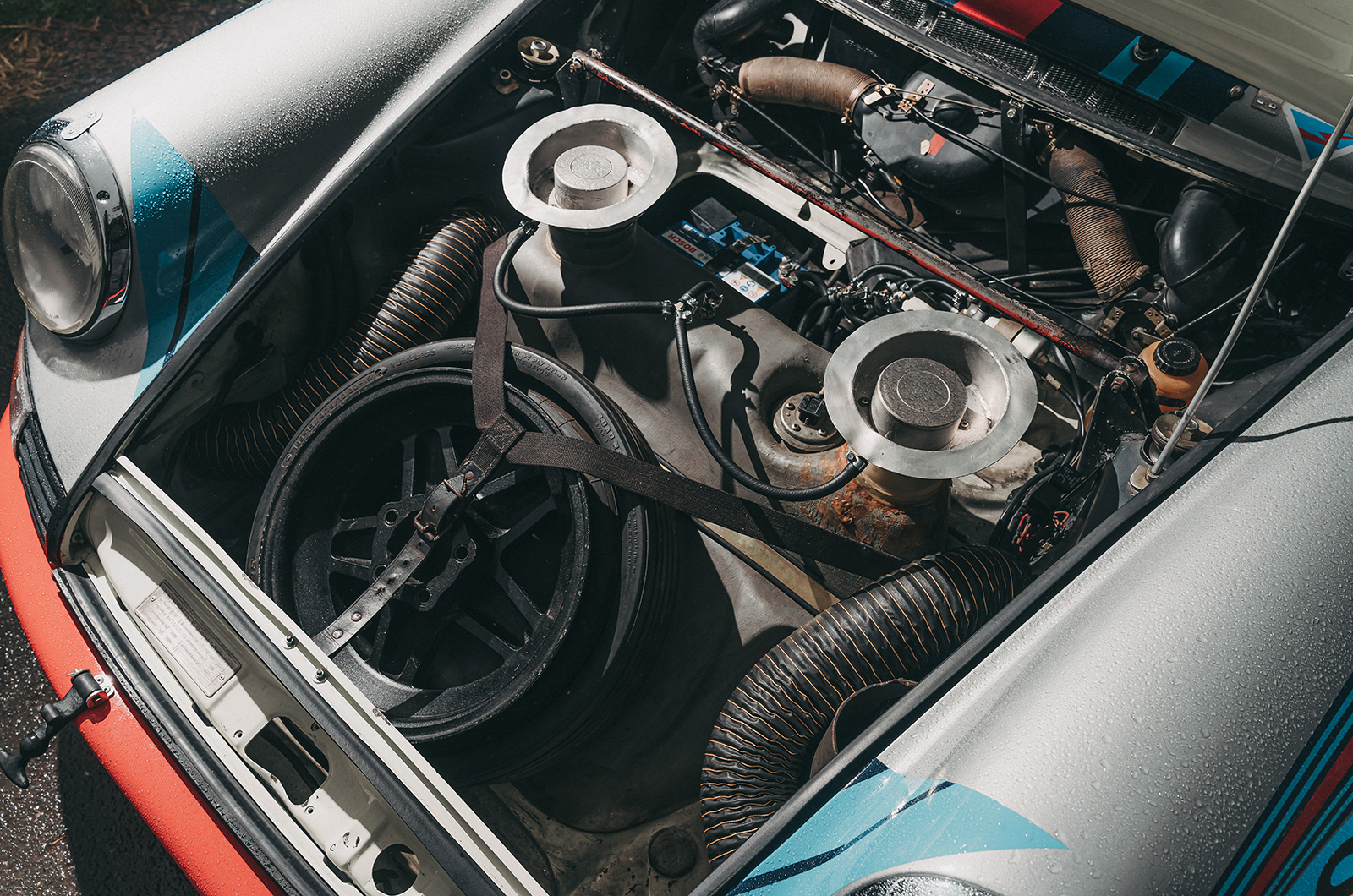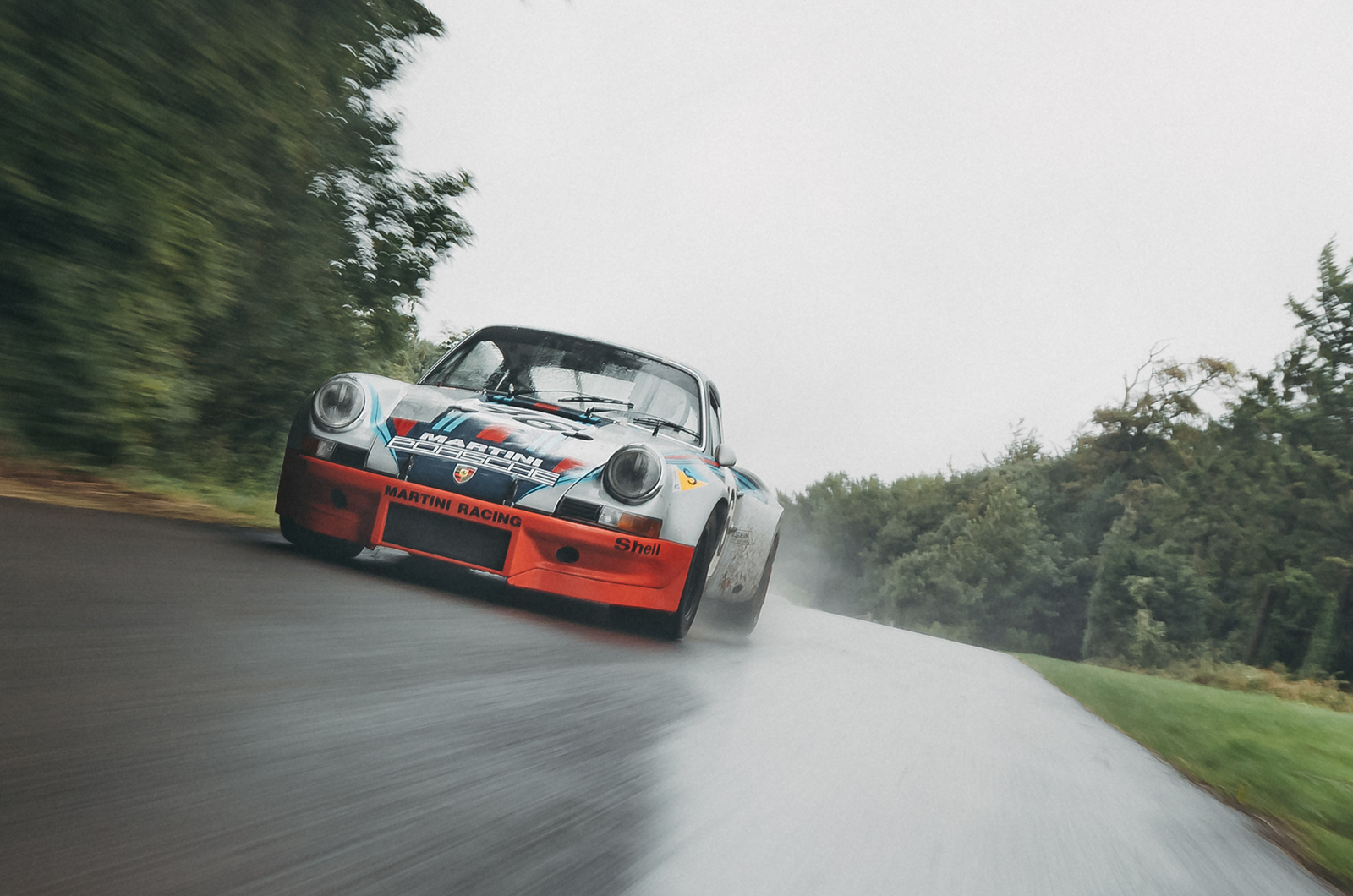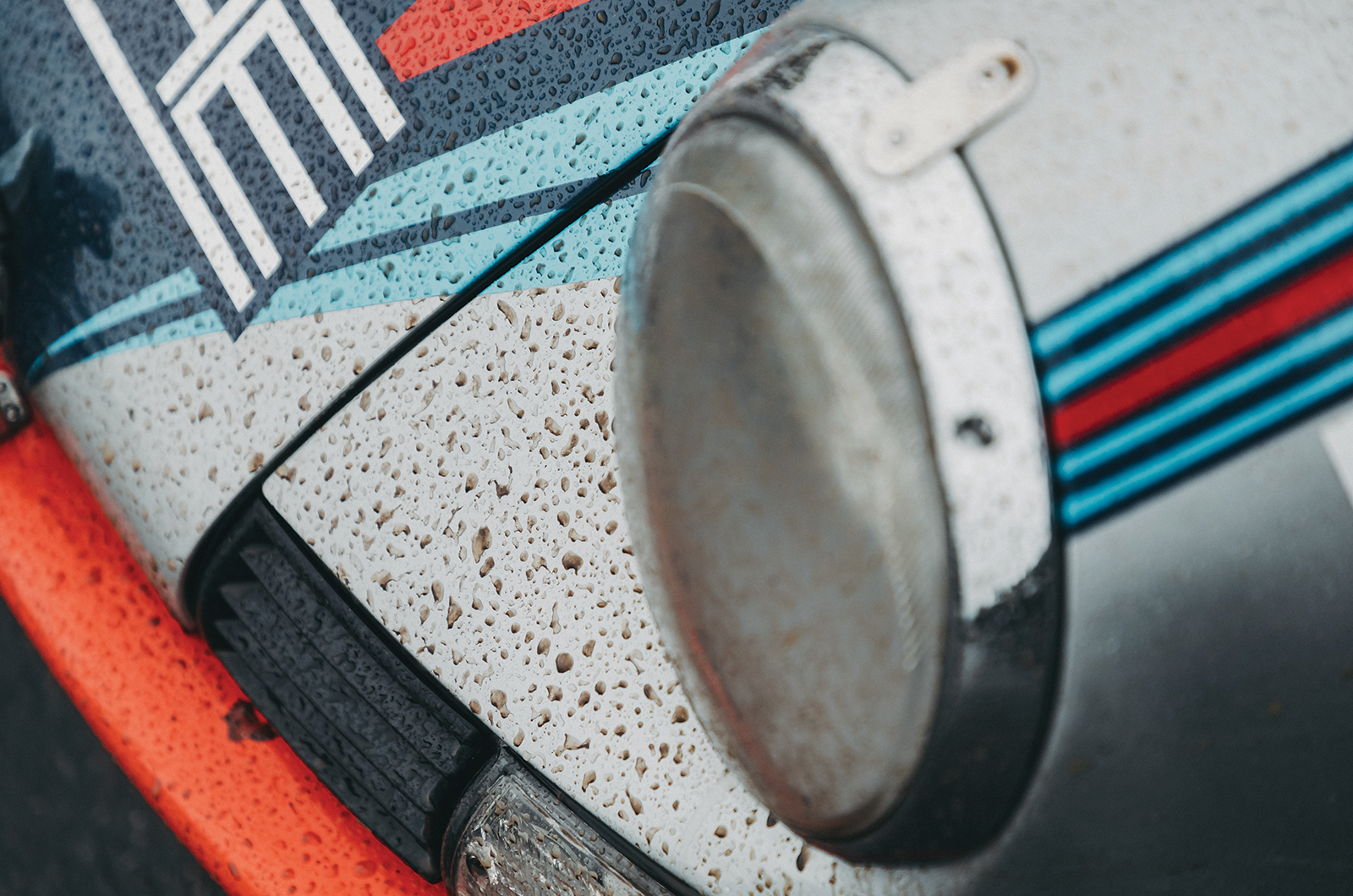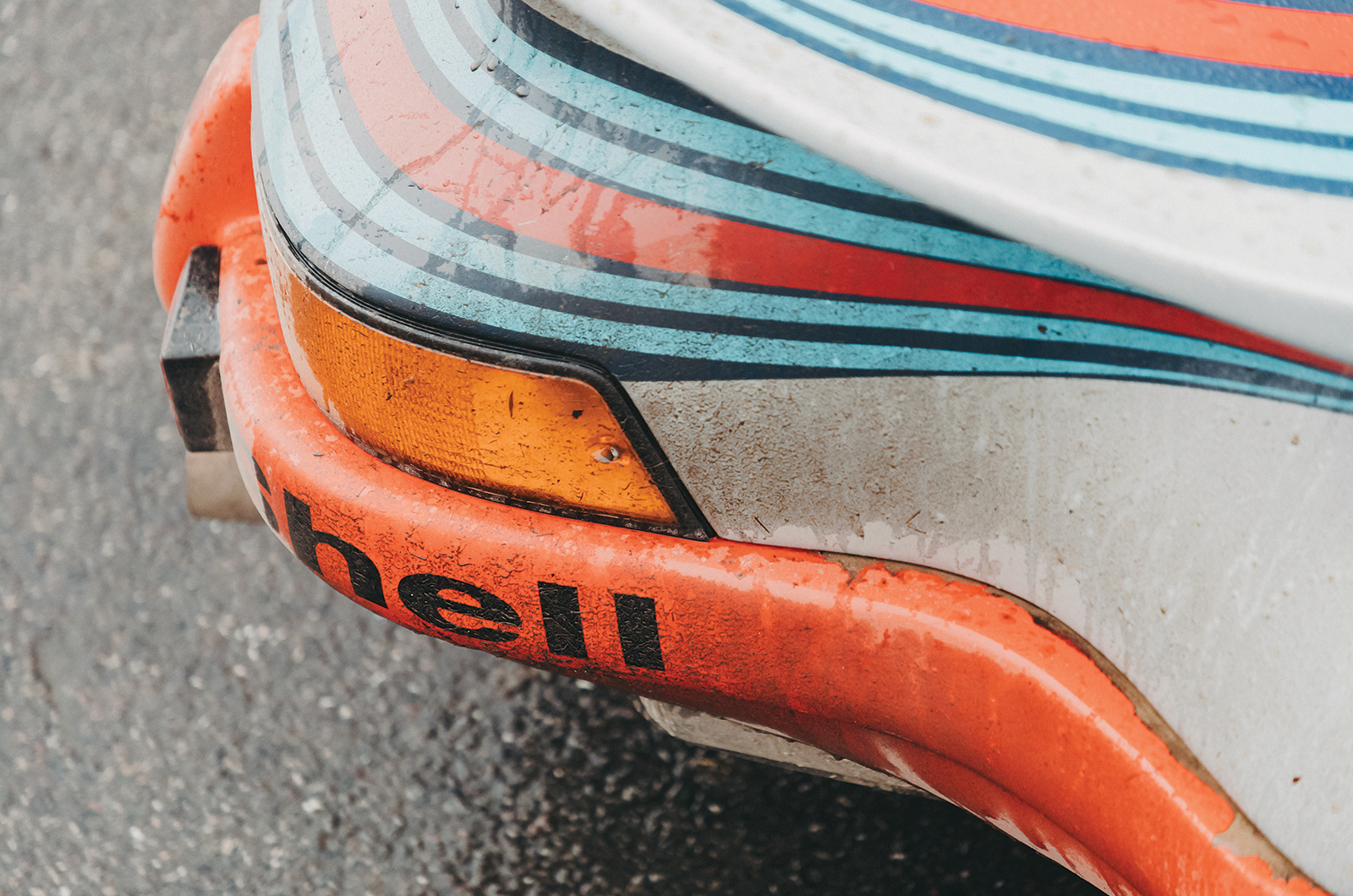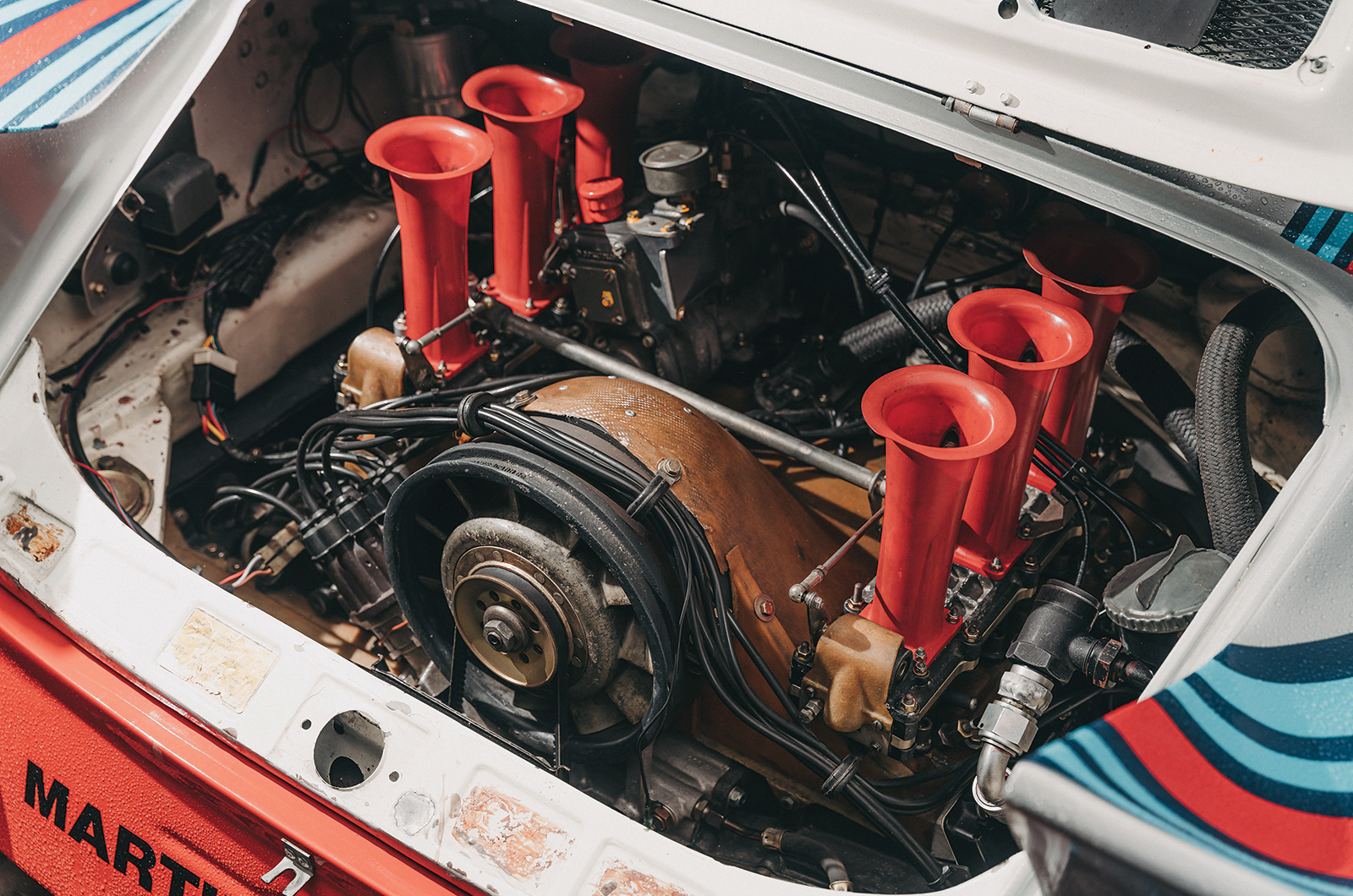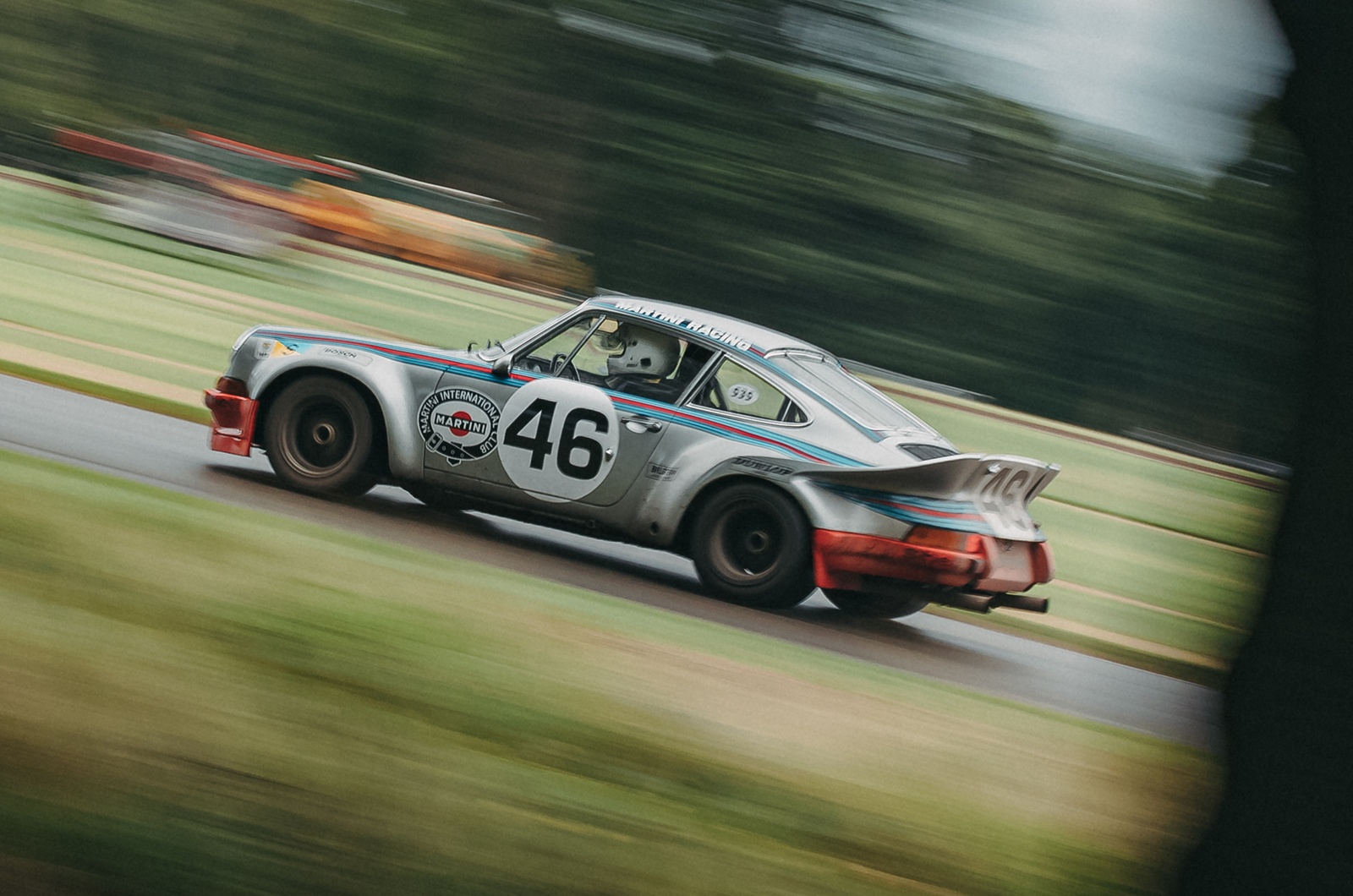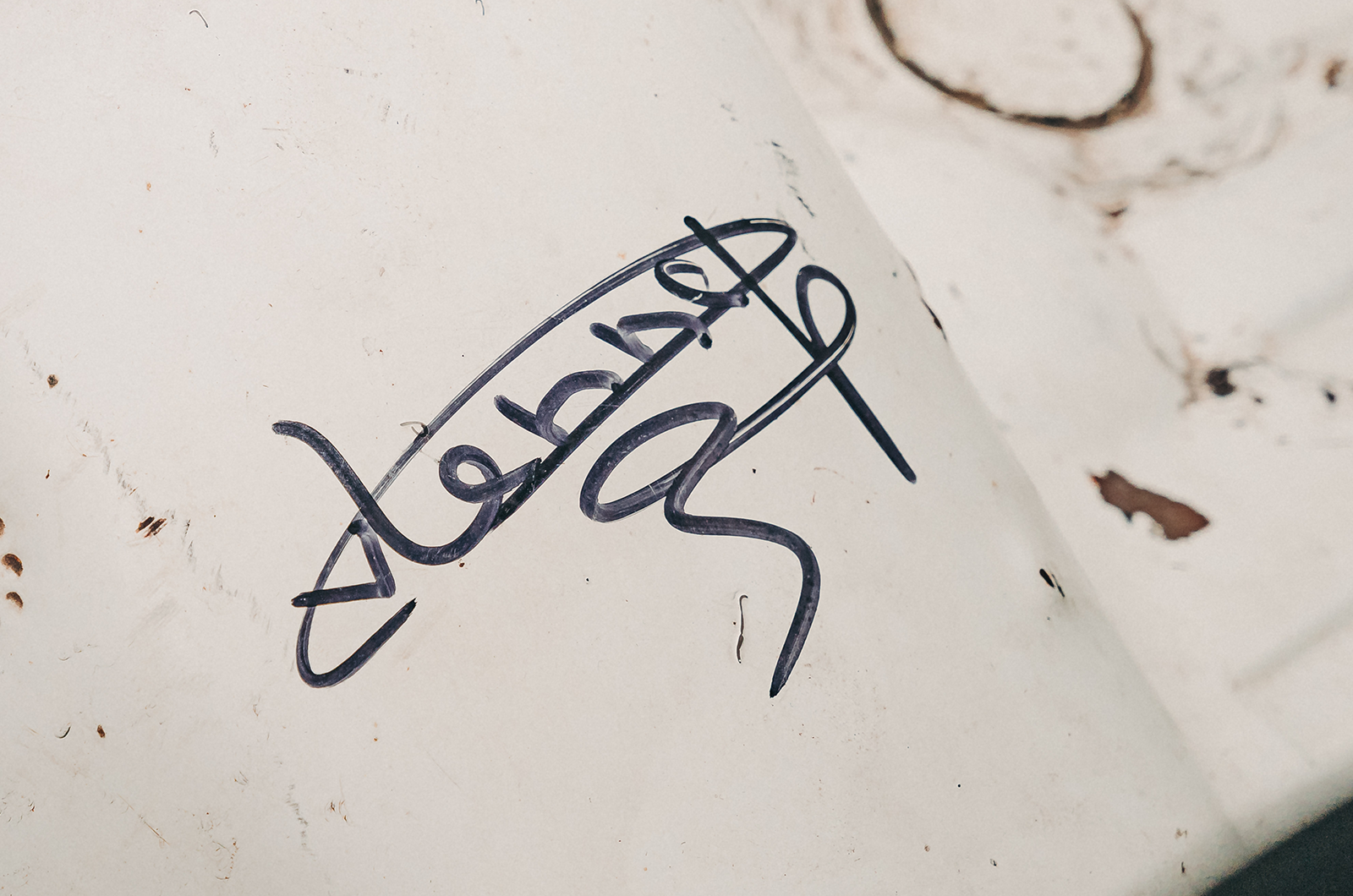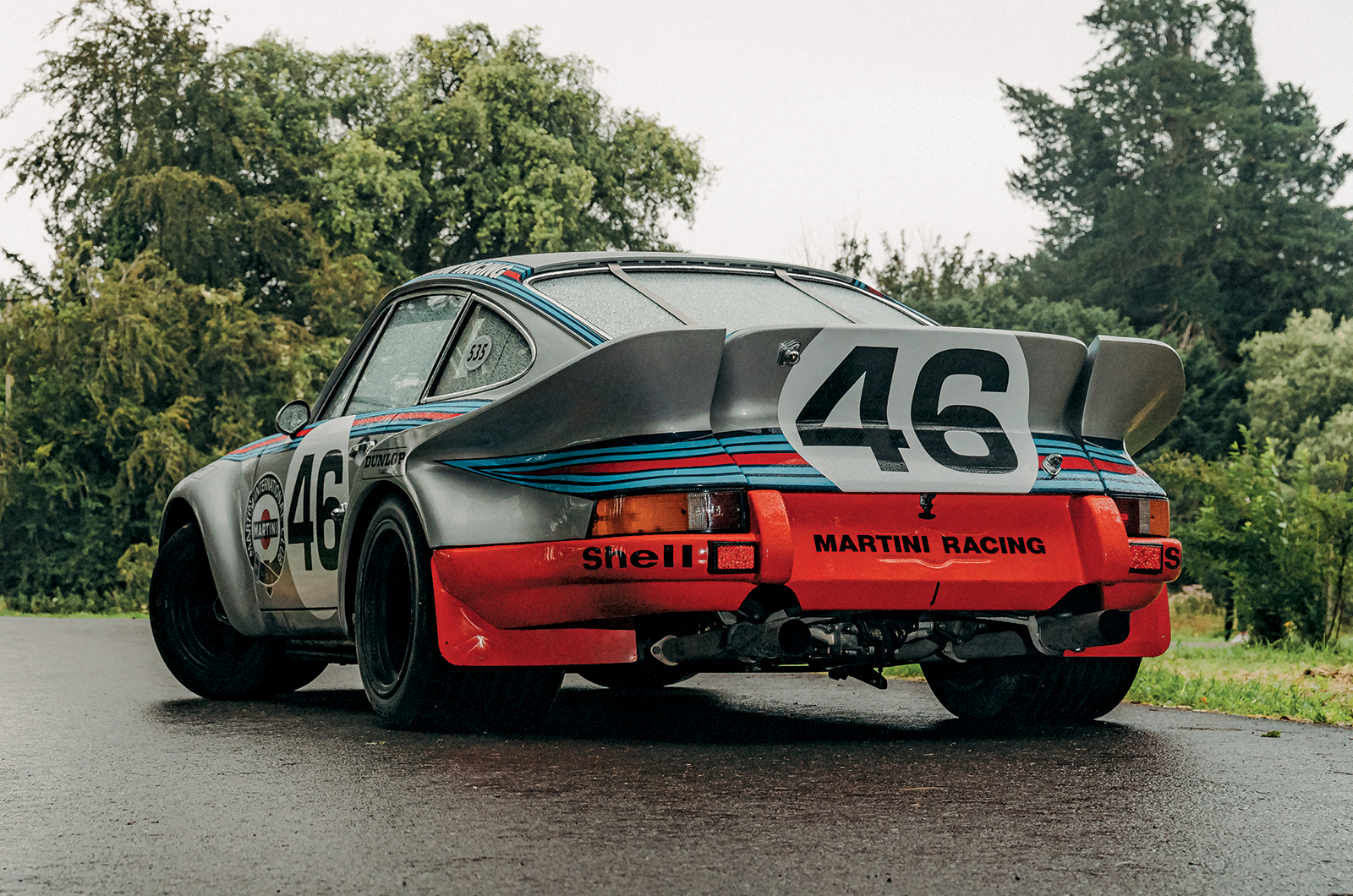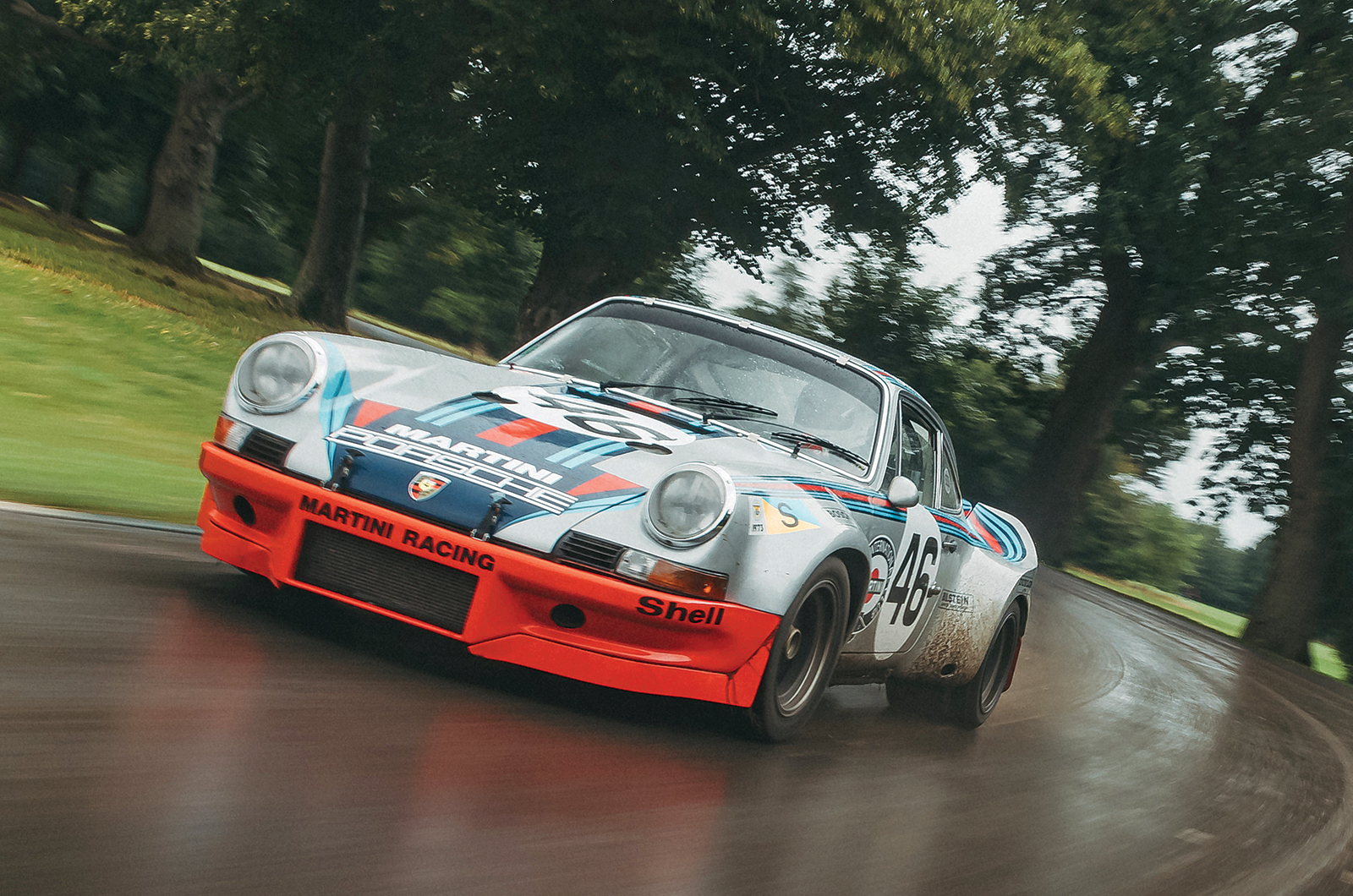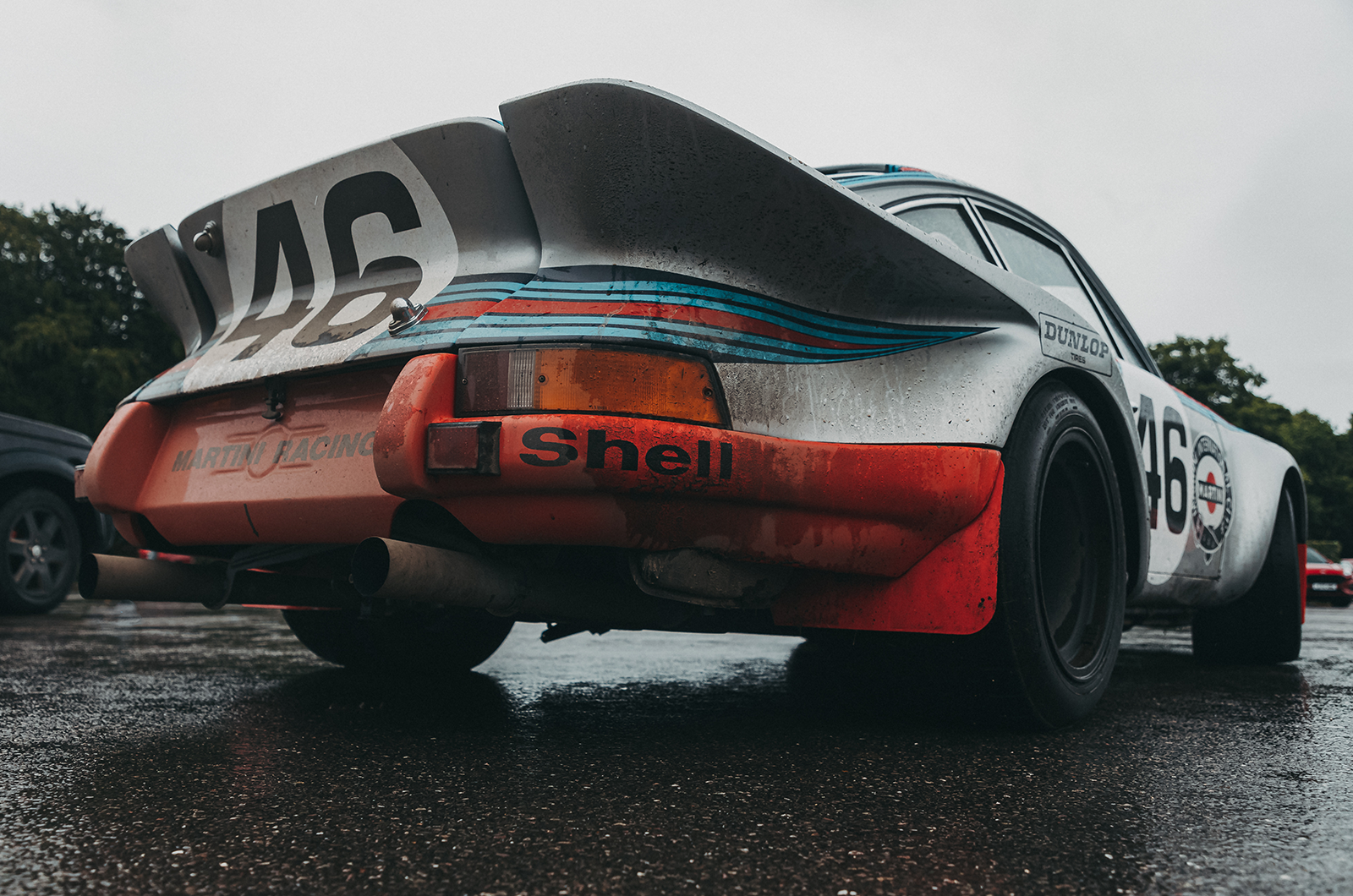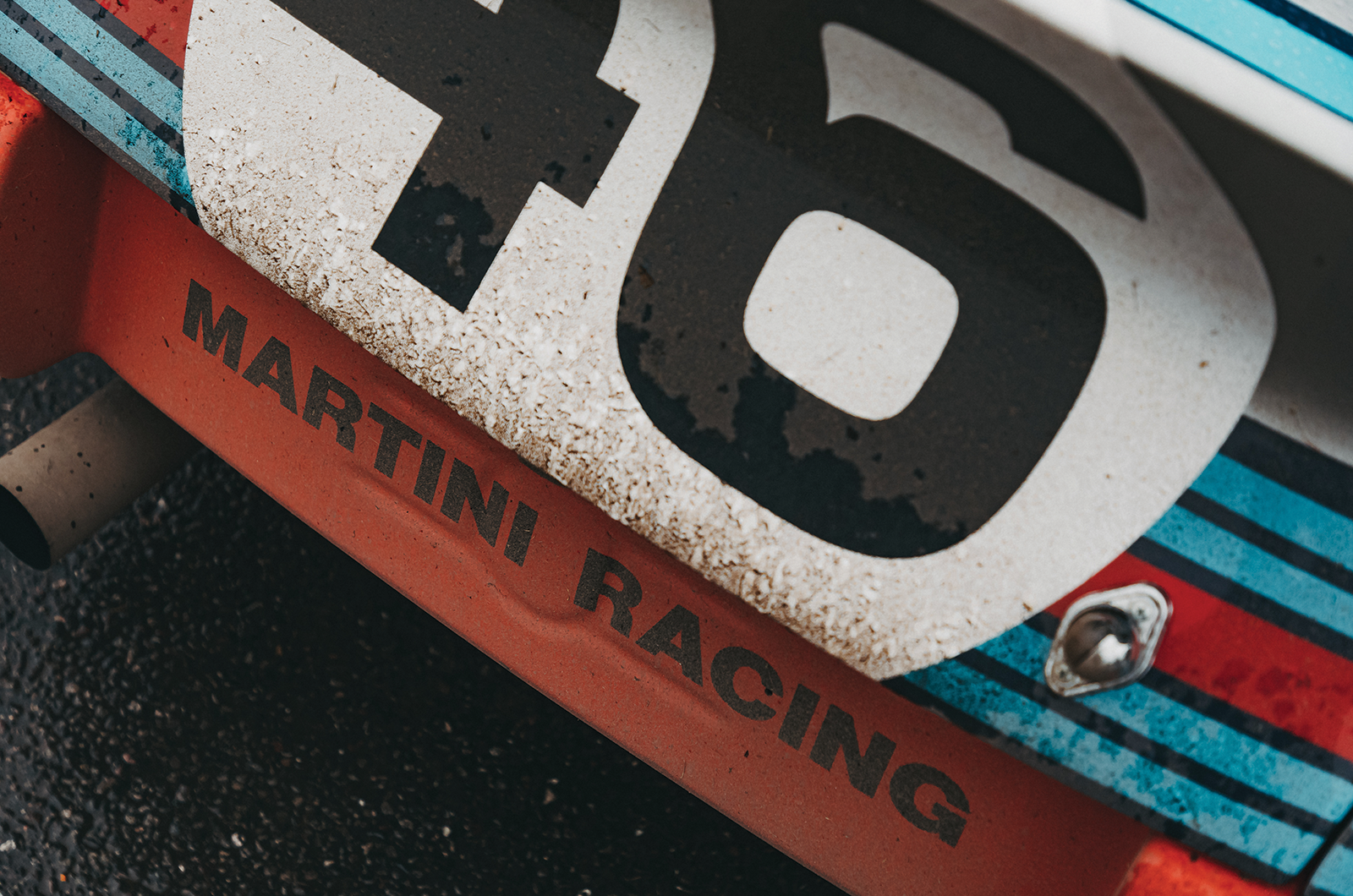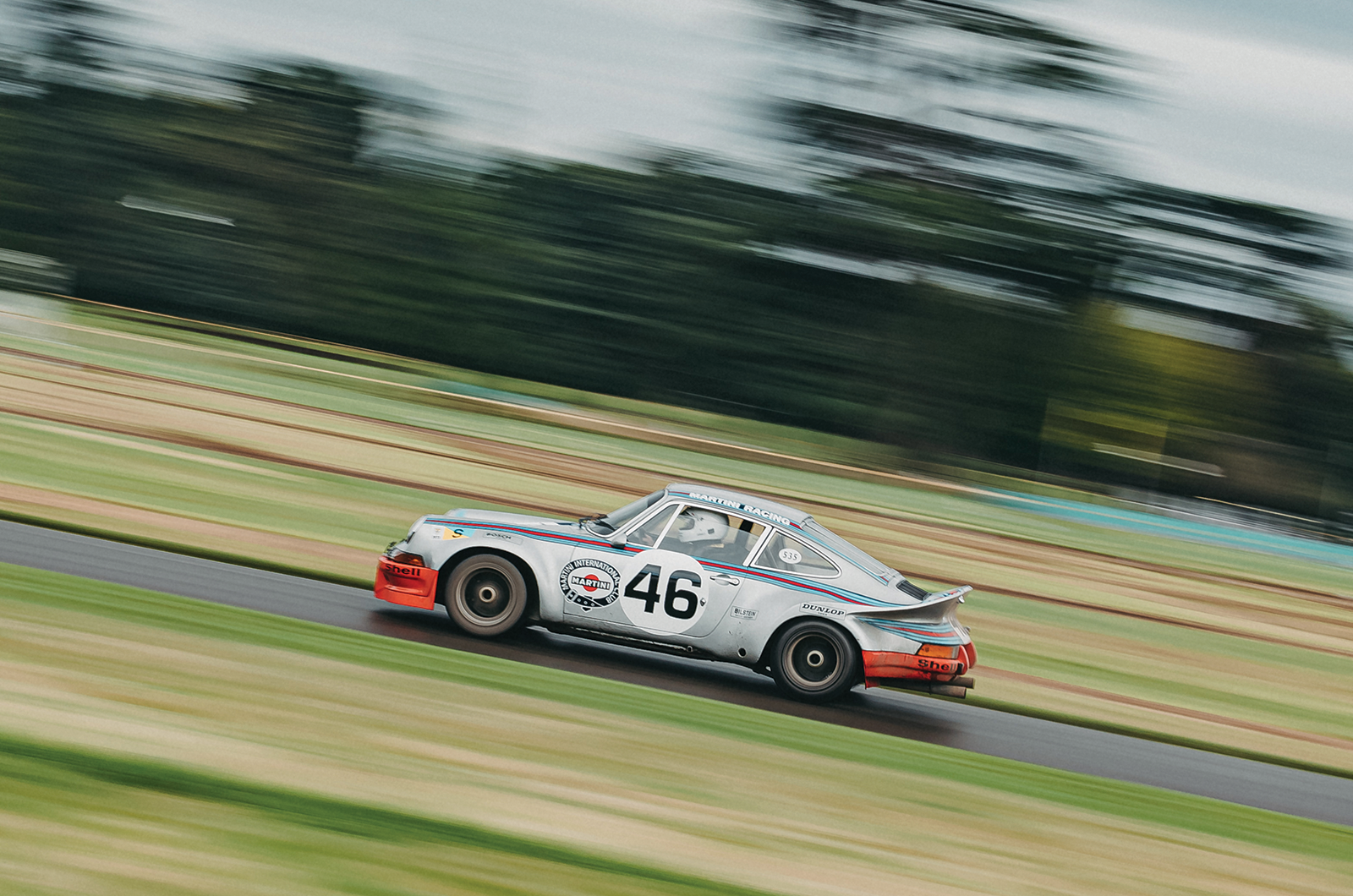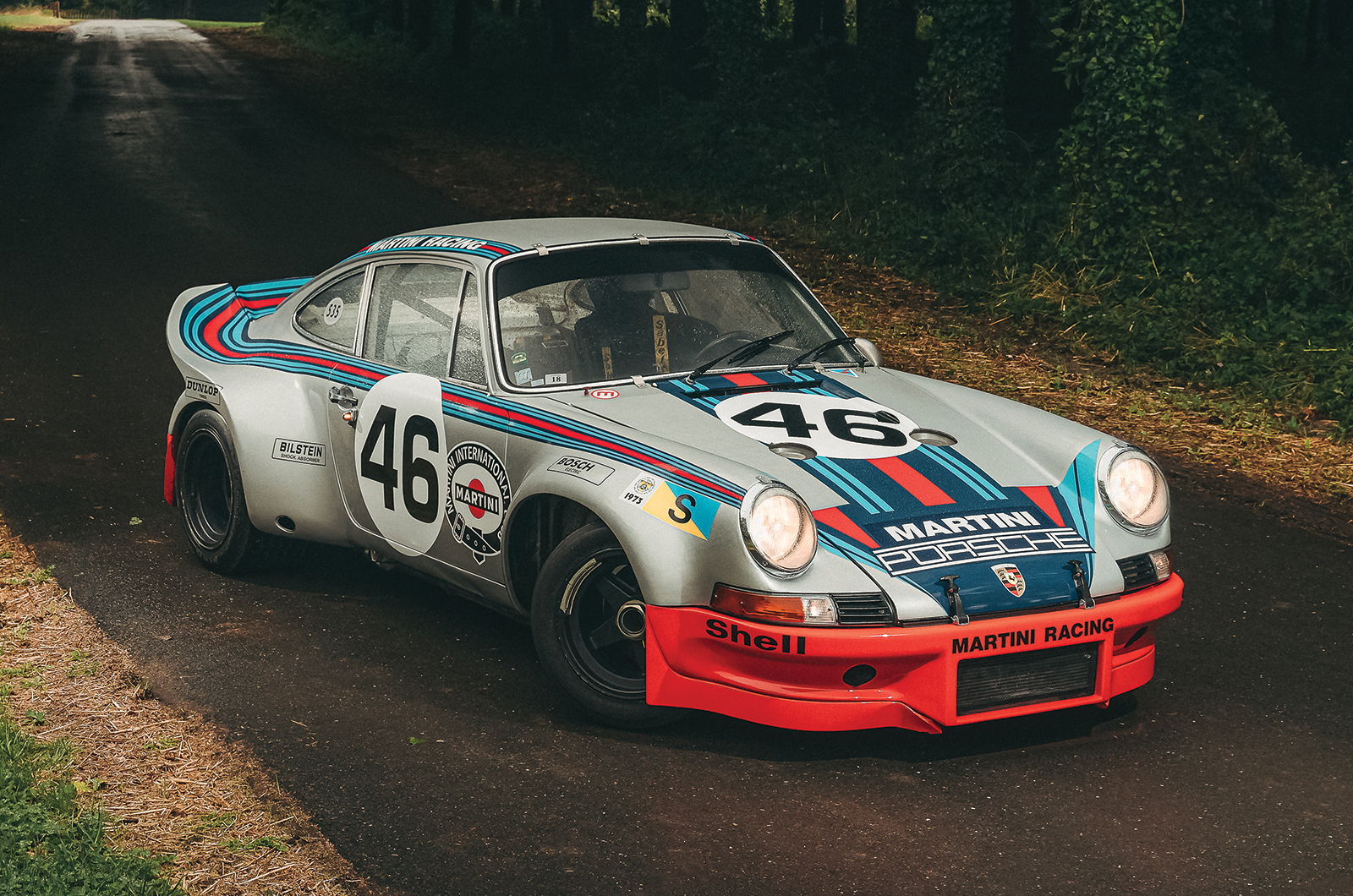Incredibly, the only cars to beat it were developed from F1 machines, weighing around 250kg less than the Porsche: two Matra-Simca MS670Bs (first and third) and a Ferrari 312 PB, in second.
The Porsche 911 Carrera RSR traded the road car’s metal bonnet for a glassfibre item
R7 raced only once more in Martini colours, at the Zeltweg 1000km, before heading to the USA for the 6 Hours of Watkins Glen, where it ran with a long tail in the white, red and blue livery of the Brumos team, finishing seventh, and in the following day’s Can-Am race, where it came ninth.
With its works and Brumos duties completed, R7 was bought by Héctor Rebaque and raced in Mexico, in Viceroy Cigarettes colours, before entering the long-term ownership of Italian collector Massimo Baliva.
During this time, R7 kept such a low profile that it was long believed the car had been destroyed, leading to the creation of a convincing replica.
The Porsche 911 Carrera RSR’s huge rear wing is matched to 14in-wide wheels
When the original car came up for sale, litigation ensued, resulting in the replica being acknowledged for what it was, and the car we’re driving today has been authenticated by none other than Martini-Porsche’s 1973 team manager, Norbert Singer.
What Norbert would say about our on-track escapades today, I’m not sure.
He’d likely question why exactly we’re battling a sodden Goodwood hillclimb in this precious racer, rather than using the circuit just down the road.
But R7 is just too damned loud: it would melt the noise meters.
Porsche’s works racing cars used telescopic Bilstein dampers
Fortunately, there are no such restrictions on the Festival of Speed’s course, though the muddy slime left on its surface by service vehicles will keep us honest – especially since the rear tyres look more like cut slicks to me, and are of unknown provenance.
Nevertheless, approach the RSR from its rear three-quarter, and this has to be one of the most handsome (and compact) Le Mans titans ever conceived, evocative Martini stripes and all.
Neat features abound: twin fuel fillers – one for petrol, the other to release air pressure from the fuel cell during refills – are cut into the nose; metal clips retain the front and rear ’screens to avoid them popping out at speed; little chrome lights on each roundel illuminate R7’s race numbers; and, of course, the unfeasibly large but beautifully integrated ‘Mary Stuart’ wing, which provided such an essential downforce tool for the high-velocity circuits on which R7 raced.
The Porsche’s race-ready flat-six engine sounds great at any speed
There’s a vestige of production-911 dash ahead when you drop into the race bucket seat, pulling the door closed with a thin leather strap (that doubles as a pull-release).
Glance behind, and there’s former R7 pilot Gijs van Lennep’s signature on the central tunnel, from when he was reunited with the car at this year’s Le Mans Classic.
Otherwise, the cabin is as spartan as you like, right down to the worryingly slender diagonals of the rollcage bolted to the bare-metal floor.
‘This has to be one of the most handsome (and compact) Le Mans titans ever conceived, evocative Martini-Porsche stripes and all’
Four VDO clocks spread across the binnacle, showing fuel level, oil pressure and water temperature, along with a tachometer displaying a bold redline at 7000rpm and a speedo reading up to 300kph (186mph).
The near-vertical, three-spoke Momo Prototipo steering wheel is, I’m told, original.
It appears that R7’s key has been temporarily lost, so when the engine erupts into life, it’s thanks to the twist of a screwdriver in part of the ignition barrel.
And, boy, does it erupt.
The huge rear wing was dubbed ‘Mary Stuart’, after the collar ruff worn by Mary Queen of Scots
Even wearing a full-face helmet, you can’t hear yourself think – not helped by R7’s reluctance to idle at much less than 2000rpm.
But I defy anyone with a love of competition cars not to savour the aural glory of a full-race Porsche flat-six, at any revs.
Release the long-travel, floor-mounted clutch, and plenty of rpm are needed to prevent an embarrassing stall.
Anything less than 3000 and a bold throttle input has you kangarooing like a learner, so you grit your teeth and try to ignore the fact that big revs could equal big spins in these conditions.
The Porsche 911 Carrera RSR racing cars could hit 180mph down the Mulsanne Straight at Le Mans – we didn’t even attempt that at Goodwood
At lower speeds, the RSR wanders as aimlessly as a bored teenager and, with standing water on the track, it’s difficult to know if that’s down to a genuine lack of traction, or the steering’s inherent vagueness just off the straight-ahead – likely a bit of both.
But, as the rain subsides and the camera car pulls in, higher speeds give the RSR the direction that it needs.
All of a sudden, there’s more substance to the steering and a previously meandering gait gives way to something more planted and reassuring, despite the still-wet track.
R7 is the most original of the surviving R-numbered Porsche 911 Carrera RSRs
Full-bore assaults on the hillclimb’s straighter sections are now possible, though a weather eye is needed on the tachometer, such is the engine’s free-revving nature and surprising smoothness as it threatens to breach the 7000rpm redline.
Gearing is predictably tall through the long-throw, five-speed ’box, so we don’t see higher than third all day, but it’s enough to get a small measure of what R7 must have been like, hammering down the Mulsanne Straight at 180mph half a century ago, chasing down those pseudo-F1 cheaters.
Images: Max Edleston
Thanks to: Mark Gold and Jonathan Gill at Bonhams|Cars; Goodwood; Andy Prill
Factfile
Porsche 911 Carrera RSR
(specification for 3-litre works cars)
- Sold/number built 1973/8
- Construction steel monocoque, steel and glassfibre panels
- Engine all-alloy, sohc-per-bank 2993cc, flat-six, Bosch mechanical fuel injection
- Max power 330bhp @ 8000rpm
- Max torque 232lb ft @ 6500rpm
- Transmission five-speed manual, RWD
- Suspension independent, at front by MacPherson struts rear semi-trailing arms; torsion bars, Bilstein telescopic dampers, anti-roll bar f/r
- Steering rack and pinion
- Brakes cross-drilled, ventilated discs with four-pot calipers
- Length 13ft 6in (4128mm)
- Width 5ft 5in (1651mm)
- Height 4ft 4in (1321mm)
- Wheelbase 7ft 5in (2271mm)
- Weight 1850lb (839kg)
- Mpg n/a
- 0-60mph 5.6 secs
- Top speed 179mph
- Price new DM59,000 (standard 2.8-litre Carrera RSR)
- Price now £4.5-5.5m (R7)*
*Price correct at date of original publication
Enjoy more of the world’s best classic car content every month when you subscribe to C&SC – get our latest deals here
READ MORE
Porsche 917: flat-out flat-12
Peugeot 402 Spécial Sport: Darl’mat’s Le Mans dream
Porsche four all: celebrating the 912E, 912 and 914
Simon Hucknall
Simon Hucknall is a senior contributor to Classic & Sports Car
